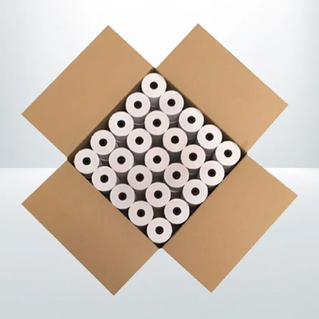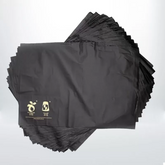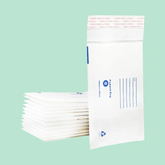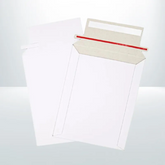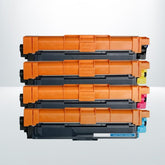Handling and storing EFTPOS paper rolls requires that they be maintained at room temperature, dry, and safe from getting wet or exposed to sunlight. The selection of quality thermal paper is very significant in getting good prints. A long-term FIFO inventory will be used to limit waste and improve quality by making old rolls easy to access. Papers containing PCBs should only be used under a fume hood or gloves preferred and such activities should not take much time. Classified maintenance keeps us from enabling fail only when lethargy repairs flows turn into formatting problems. So much more to learn about making it the best EFTPOS experience, including where and how to safely source and store devices.
Proper Environment for Storage
Environmental conditions for storing EFTPOS paper rolls must be adhered to with utmost rigor. For the paper rolls to work, as they should, proper storage is equally important for a smooth business.
The areas where the paper rolls for EFTPOS machines are stored should be dry and cool, protected from any sunlight. Excessive heat and moisture have adverse effects on flaps' thermal rolls, causing their print to be unacceptably poor, prone to early smudging, or unrecognized.
A constant temperature is the best for a storage room because temperature variations can also adversely affect the paper quality.
This is better since temperature changes can also affect paper integrity. A stable temperature is preferred for the storage area.
It's best to keep EFTPOS machine receipt rolls in their original packaging until we're ready to use them. This helps protect them from dust and possible contaminants.
Placing heavy items of any kind on top of the rolls should also be avoided, as this could lead to misshaping or damaging the rolls.
Select Top-Quality Paper Rolls
Not to forget, choosing the right rolls for EFTPOS machines would be the most crucial thing for quality prints and quantity. undefined
To be specific, EFTPOS paper must be used to prevent issues regarding compatibility with other papers or poor quality.
Cleaning usually helps improve the quality of the print while reducing the slack in the paper, producing clear receipts without inconsistencies.
Make sure that what you use meets the specifications of the machine in thickness and width to prevent jams that may adversely affect the life of the machine.
Focus on the sensitivity of the paper and note the unique characteristics of higher sensitivity rolls as they produce better prints under heat as opposed to the likely lesser quality in comparison with the rest.
Select the cheapest available products without compromising quality to solve the environmental problems.
Carefully select your suppliers and make sure that they are reliable to be able to deliver and offer reliable performance.
Utilize FIFO Rotation for Inventory Management
Having selected fine quality rolls to be inserted into our EFTPOS machine, controlling their inventory is our next challenge. One of the best ways we can adopt is going the FIFO way: First In First Out. This makes it almost impossible to use any stock but the first in, and with that, significantly reduces liability for waste because of papers expiring.
To implement FIFO, we would ensure that the storage area is such that older rolls can be easily accessed. When new stock comes in, instead of getting rid of rolls that are still in use, place the newly received rolls behind the already existing ones and put a sticker on every batch with the date of receipt. So the inventory management systems will help in monitoring when to dispose of each roll, depending on the lifespan of the rolls and the frequency of their use.
Moreover, it is also important to teach the rationale behind FIFO to our employees. When scarce and precious time is wasted, it discourages an entire inventory management process.
In the end, one’s waste management practices would not only be wasteless but also improve the quality of papers always available for her EFTPOS systems. This small practice will enhance and reduce costs for future operations, positively influencing our operations.
Monitor for Potential Chemical Exposure
It is very crucial to keep monitoring for possible exposures during handling of EFTPOS paper rolls, especially thermally-printed paper. These rolls can contain substances such as bisphenol A (BPA) or bisphenol S (BPS), both of which could be detrimental to health if exposure is prolonged. Observations should always be in place with a close eye on the handling performed on these materials.
First, we suggest wearing gloves while touching thermal papers. This precaution reduces direct skin contact, thus diminishing the risk of dermal absorption.
The second suggestion would be to have all activities performed in a well-ventilated area so that any fumes that might escape during the handling process could be diluted.
It is of utmost importance that employees be informed about the hazards of thermal paper. Regular training sessions can therefore aid in heightening awareness and supporting safe handling technique.
Disposing of used rolls is subject to the local regulations concerning the disposal of hazardous waste to avoid any contamination to the environment.
Last, we ought to remain alert to the changes in the regulations and the safety requirements concerning thermal paper. By this system for monitoring chemical exposure, we shall be able to protect ourselves and our coworkers and provide a safe environment for work.
Schedule Consistent Checks on Your Rolls
Regular care and checks should be done on your EFTPOS paper rolls to ensure smooth operations. The key steps include:
Identify regular check-ins with your rolls; perhaps weekly or monthly.
Check stock levels after ensuring rolls in storage fulfill the requirements of customers.
Check how the rolls are stored.
Whenever a stock discrepancy or a low level is noted, reorder or adjust the inventory level accordingly.
Check rolls for damage such as tears, discoloration, or any defects.
Throw out defective rolls to minimise print issues or disruptions at the point of sale.
Exercise Caution When Handling
Care must be exercised in handling EFTPOS paper rolls to avoid any damage and ensure a long service life. Here is how:
Avoid crumpling or tearing the rolls, which could affect the quality of printing; instead, gently keep the rolls.
This will ensure that oils, dirt, or moisture will not come into contact with the coating of the thermal paper and damage it by smudging prints.
Use a soft cloth to dry-clean visible debris and ensure that the rolls are free from contaminants before use.
Open the package with care, avoiding sharp instruments that could cut the paper. Instead, employ fingers to gently press the seals open.
Store the rolls in a cool and dry place away from direct sunlight so that the thermal paper is protected from damage from heat and humidity.
Frequently Asked Questions
How long does an EFTPOS paper roll last when kept properly?
For now, an EFTPOS paper roll lasts as long as 3 to 5 years when it is properly stored. It must be kept in a cool, dry place and, most importantly, away from direct sunlight to truly maintain its freshness and longevity.
Can I Put EFTPOS Paper Rolls Near Electronic Devices?
We should not keep EFTPOS paper rolls near electronic devices because heat and electromagnetic interference may contribute to damage to the paper's thermal coating, degrading print quality. Let's keep them cool and dry instead.
What Should I Do if My Rolls Get Wet?
If our rolls end up damp, we need to quickly take them out of any wrapping and dry them off gently without heat sources. The right move would be to get rid of those that are too damp because that will ensure quality printing.



